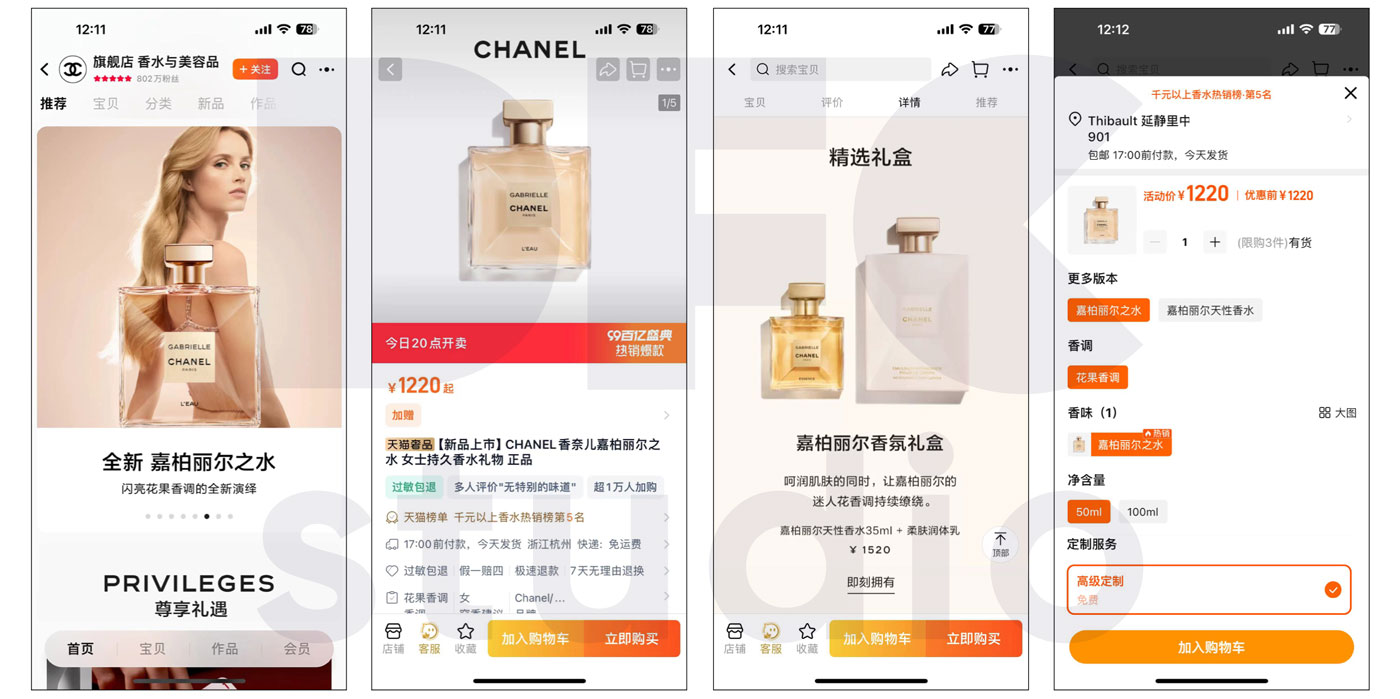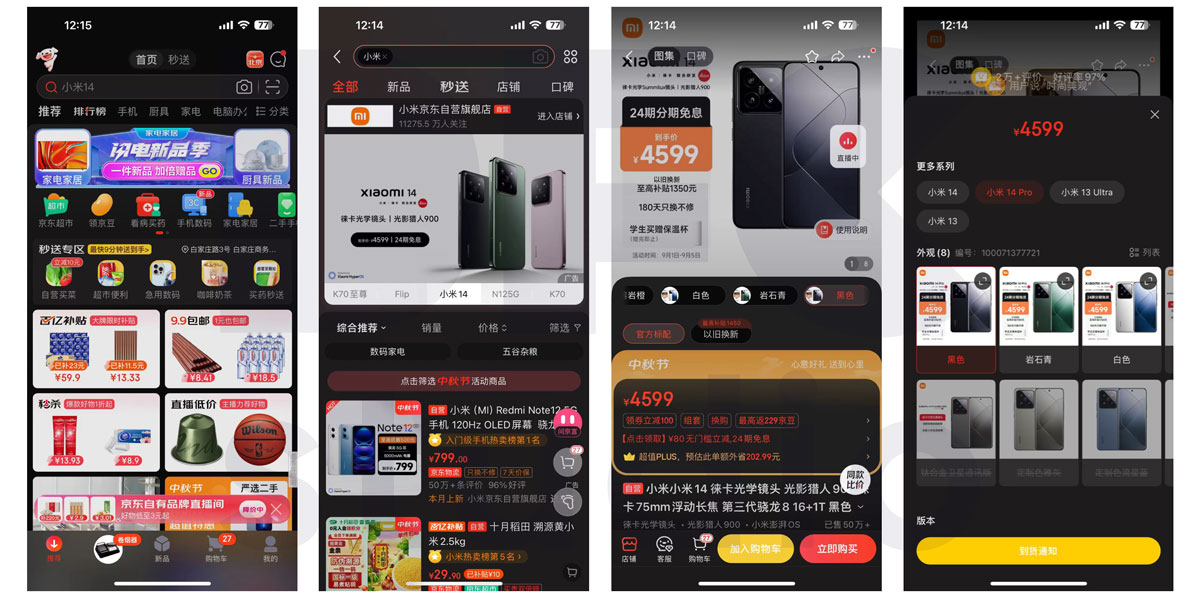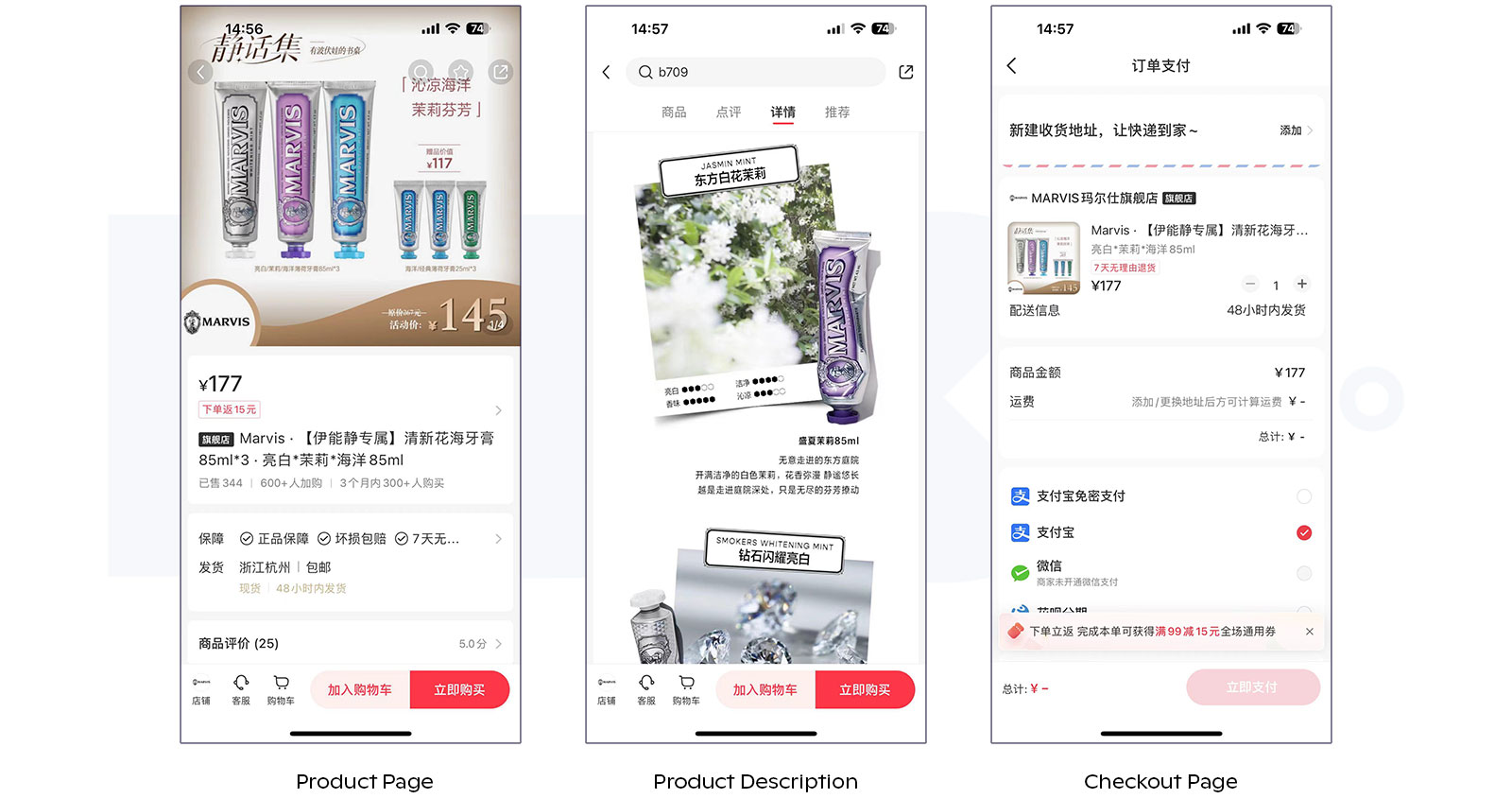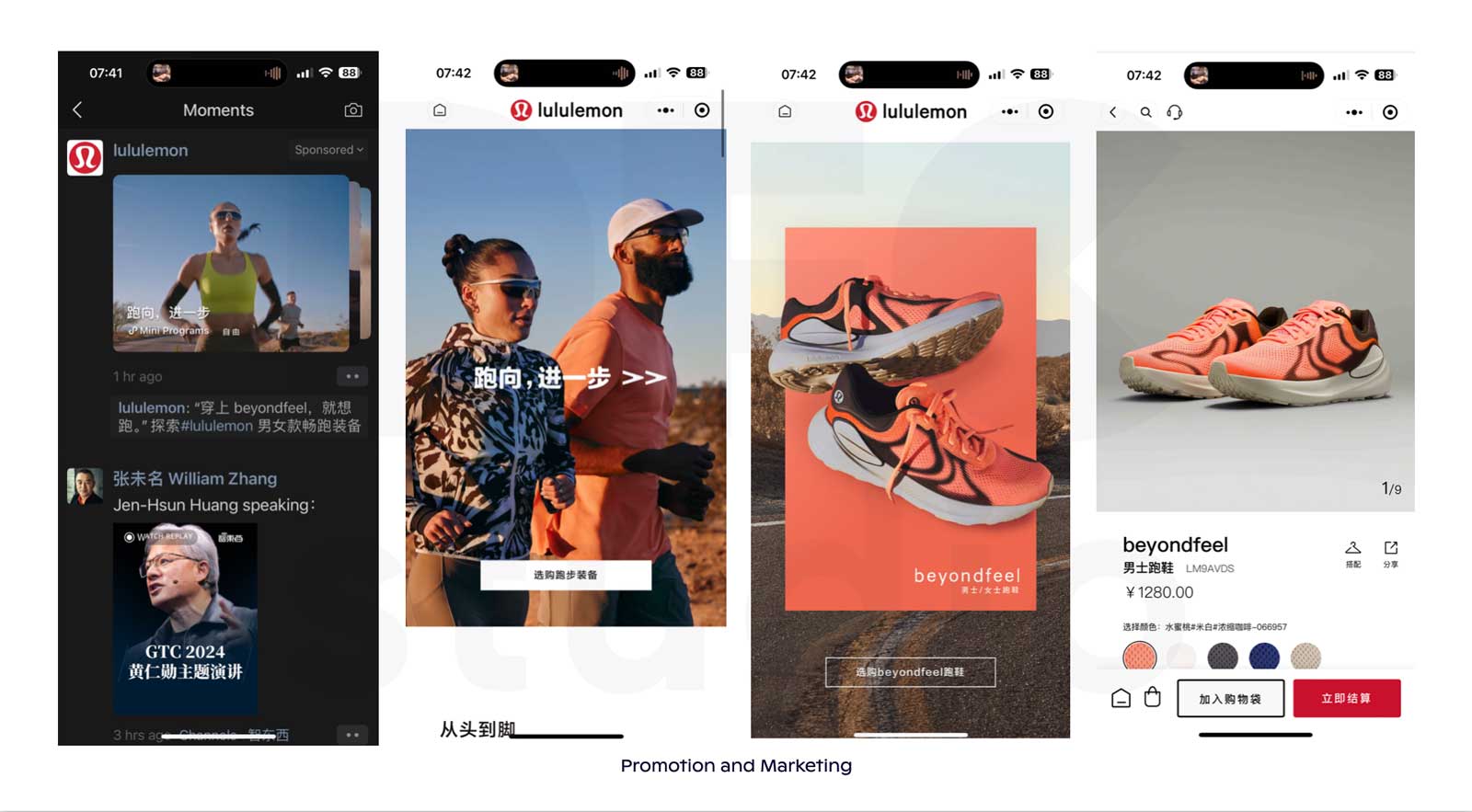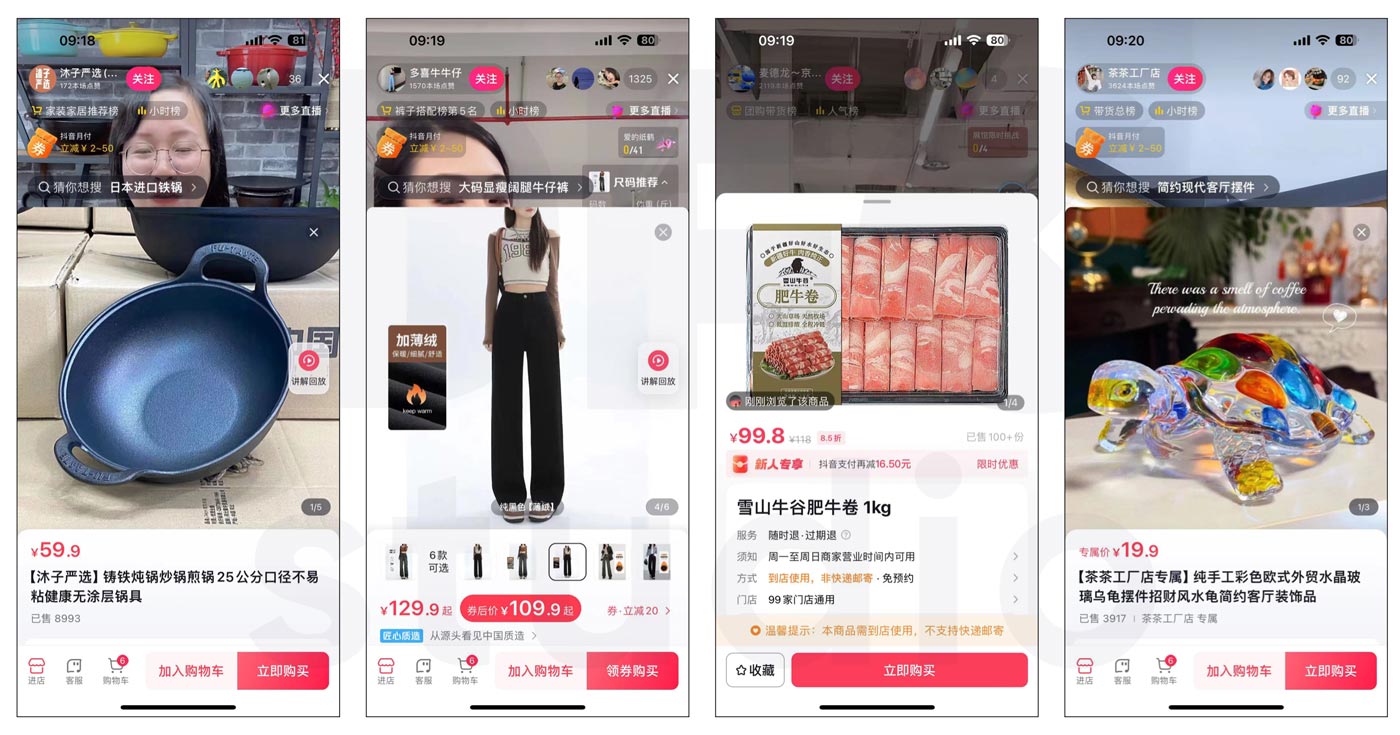Where do People Shop Online in China? A Complete Guide to China’s Top E-commerce Platforms (2025)
China’s e-commerce market is the largest in the world, with millions of people shopping online every day.
Unlike in many other countries, the platforms Chinese consumers use for online shopping are unique, offering a wide range of products and services tailored to local preferences.

Whether it’s daily essentials, luxury goods, or foreign brands, there’s a platform for every shopper.
For businesses looking to enter the Chinese market, understanding where people shop online is crucial.
In this article, we’ll explore the top e-commerce platforms in China, their features, and why they dominate the online shopping landscape. From popular marketplaces like Taobao and JD.com to rising stars like Pinduoduo and Xiaohongshu, we’ll uncover the best places to sell or shop in this thriving digital environment.
1. The Growth of E-commerce in China
China’s e-commerce market has seen explosive growth over the past decade, becoming the largest in the world. With over a billion internet users, the country has embraced online shopping like no other, with e-commerce sales accounting for a significant portion of total retail sales. Several factors have contributed to this rapid expansion.
One of the key drivers is the widespread use of mobile devices. Chinese consumers are highly mobile-oriented, with the majority of online shopping being conducted on smartphones rather than desktops. E-commerce platforms have adapted by creating mobile-first experiences that make shopping quick, easy, and accessible anywhere, anytime.
Another important factor is the fast, efficient logistics infrastructure. Same-day or next-day delivery has become the standard, thanks to strong partnerships between e-commerce platforms and logistics companies. Consumers in both urban and rural areas can receive their purchases rapidly, making online shopping not only convenient but also reliable.
Digital payments have also played a crucial role in fueling e-commerce growth. Platforms like Alipay and WeChat Pay have revolutionized the way consumers shop, providing seamless and secure payment options. This, combined with innovative features like mobile wallets and in-app purchases, has made online shopping even more appealing.
As e-commerce continues to expand in China, new trends like live-stream shopping and social commerce are emerging, offering consumers a more interactive and engaging shopping experience. For businesses, this growth presents a golden opportunity to tap into one of the most dynamic and lucrative markets in the world.
2. Major E-commerce Platforms in China
China’s online shopping landscape is dominated by a few key platforms, each catering to different types of consumers and offering a unique shopping experience. Here’s a look at the major e-commerce platforms where most Chinese consumers shop online.
A. Taobao
- Overview: As the largest consumer-to-consumer (C2C) marketplace in China, Taobao, owned by Alibaba, is the go-to platform for a vast range of products, from low-cost items to niche, handmade goods. It is popular for its wide variety of sellers, including small businesses and individuals.
- Features: Taobao offers a highly customizable shopping experience with features like live-streaming sales, interactive product recommendations, and detailed user reviews. It also integrates seamlessly with Alipay, providing a smooth checkout process.
- Shopping Experience: Chinese users enjoy Taobao for its affordability, extensive product listings, and unique finds that cater to every budget and taste.
B. Tmall
- Overview: Also owned by Alibaba, Tmall is the premier business-to-consumer (B2C) platform, focused on selling higher-end products from well-known brands, both domestic and international. Tmall is seen as a more trusted and premium version of Taobao.
- Features: Tmall provides consumers with access to quality-controlled goods and a more formal shopping experience. Tmall Global, its cross-border platform, allows international brands to sell directly to Chinese consumers without needing a local presence.
- Brands: Major global brands like Nike, Apple, and L’Oréal have established flagship stores on Tmall, making it the top destination for consumers seeking genuine, high-quality products.
C. JD.com (Jingdong)
- Overview: JD.com is one of China’s largest business-to-consumer (B2C) platforms, known for its extensive selection of electronics, home appliances, and consumer goods. JD operates on both a direct sales and marketplace model, where it sells products directly to online shoppers as well as hosts third-party sellers.
- Features: JD.com has a reputation for its fast delivery service, often offering same-day or next-day delivery thanks to its sophisticated logistics network. It’s also trusted for selling authentic, high-quality products, which makes it particularly popular for electronics and big-ticket items.
- Consumer Trust: Chinese consumers rely on JD.com for its efficiency, reliability, and strong customer service, making it a preferred platform for those seeking convenience and quality assurance.
D. Pinduoduo
- Overview: Pinduoduo is a fast-growing social e-commerce platform that focuses on group-buying deals, enabling users to invite friends and family to purchase items together at discounted prices. It has quickly gained popularity in China’s lower-tier cities and among price-sensitive shoppers.
- Features: Pinduoduo integrates social interaction into the shopping experience, encouraging users to share deals via WeChat and other social platforms. Its focus on lower-priced goods and group discounts appeals to a wide range of consumers looking for bargains.
- Growth: Its success in rural and smaller cities has made Pinduoduo a major player, helping it surpass traditional platforms in terms of active users in some areas.
E. Dewu (Poizon)
- Overview: Dewu, also known as Poizon, is China’s leading e-commerce platform for authentic sneakers, streetwear, and fashion items. It has become a go-to destination for young, fashion-conscious consumers who value authenticity and exclusive products.
- Features: Dewu stands out for its authentication services, ensuring that all products sold on the platform are genuine. It’s popular among sneakerheads and streetwear enthusiasts, offering a wide range of limited-edition sneakers, fashion items, and accessories.
- Consumer Base: Dewu attracts a young, trendy audience with a strong focus on style and authenticity, making it a top platform for brands and resellers in the streetwear and fashion industries.
These major e-commerce platforms dominate China’s online shopping ecosystem, each with its own strengths, target audiences, and unique features. Understanding these platforms can help brands identify the best fit for their products and marketing strategies in China’s vast e-commerce landscape.
3. The Rise of Social Commerce
In recent years, social commerce has become a significant part of the e-commerce ecosystem in China, blurring the lines between social media interaction and online shopping. Chinese consumers increasingly shop through social platforms, driven by influencer recommendations, live-streaming, and seamless integration with e-commerce platforms. This shift offers brands new and innovative ways to engage with shoppers.
A. Xiaohongshu (Little Red Book or RED)
- Overview: Xiaohongshu, or Little Red Book, is a hybrid between a social media platform and an e-commerce site, catering to young, fashion-conscious consumers. The platform is particularly known for beauty, fashion, and lifestyle products, and has a strong community-driven aspect where users share product reviews and recommendations.
- Features: Xiaohongshu stands out for its focus on user-generated content, allowing consumers to browse reviews and product recommendations before purchasing. Influencer marketing and social proof play a big role in driving sales on the platform.
- Community-Driven: The platform’s highly engaged user base makes it ideal for brands that want to leverage word-of-mouth marketing and influencer partnerships to connect with millennial and Gen Z shoppers.
B. WeChat
- Overview: WeChat, China’s most popular messaging app, has evolved into a powerful platform for social commerce. With its mini-programs, WeChat allows brands to set up shops within the app, making it easy for users to browse and purchase products without leaving the platform.
- Features: WeChat offers integrated payment options through WeChat Pay, as well as personalized shopping experiences. Brands can connect with users via official accounts, sharing product updates, promotions, and customer support directly through the app.
- Why It Works: WeChat’s user base is immense, and its seamless integration of social interaction, payments, and e-commerce makes it an essential tool for brands looking to target Chinese consumers in a more personalized, interactive way.
C. Douyin (TikTok in China)
- Overview: Douyin has transformed from a short-video platform into a major player in China’s e-commerce world. Its video-based format allows influencers and brands to showcase products through engaging, entertaining content that appeals to younger audiences.
- Features: Live-streaming is a core feature, allowing influencers to present products in real-time, interact with viewers, and drive instant sales. Douyin’s in-app shopping links enable users to purchase directly from videos, making it an ideal platform for impulse buys.
- Influencer Power: Brands can leverage the massive followings of influencers to tap into loyal communities and promote products. The interactive nature of Douyin’s content has led to strong conversion rates for many brands.
D. Kuaishou
- Overview: Kuaishou, another popular short-video platform, has grown into an important social commerce tool, especially in China’s lower-tier cities. Similar to Douyin, Kuaishou integrates live-streaming with e-commerce, allowing users to buy products during live sessions.
- Features: Known for its more down-to-earth content, Kuaishou appeals to consumers looking for practical, affordable products. The platform’s live-streaming commerce model has become highly popular, driving significant sales volumes.
- Community Engagement: Kuaishou’s emphasis on authenticity and community engagement makes it a trusted platform for users in smaller cities, where word-of-mouth and influencer recommendations play a crucial role in purchasing decisions.
Social commerce has revolutionized the way Chinese consumers shop, offering brands opportunities to engage with their audience in more interactive, personalized ways. Platforms like RED, WeChat, Douyin, and Kuaishou are driving this trend, combining social interaction with seamless purchasing experiences, making them essential tools for brands looking to tap into China’s growing e-commerce market.
4. Mobile-First Shopping
China’s e-commerce landscape is dominated by mobile-first shopping, with the majority of Chinese consumers using their smartphones for online purchases. This shift to mobile devices has been driven by the widespread adoption of mobile internet, the development of mobile payment systems, and the design of e-commerce platforms that prioritize mobile users.
A. Mobile Penetration in China
- Overview: China has one of the highest rates of smartphone penetration in the world, with over 990 million mobile internet users. This massive mobile user base has made mobile devices the primary tool for online shopping in China.
- Why It Matters: For brands, this means that optimizing their digital presence for mobile is crucial. Websites and e-commerce stores must be mobile-friendly to capture the attention of Chinese shoppers who rely on their smartphones for browsing and purchasing.
B. Mobile Payment Systems
- Overview: Mobile payments are at the core of China’s mobile-first shopping ecosystem. Platforms like Alipay and WeChat Pay have revolutionized the checkout process, offering a seamless, secure way for consumers to pay for goods and services directly from their smartphones.
- Features: Alipay and WeChat Pay are fully integrated into major e-commerce platforms like Taobao, JD.com, and Tmall, allowing buyers to complete transactions with just a few taps. This convenience has significantly boosted the popularity of mobile shopping.
- Implications for Brands: To succeed in China, businesses must ensure they support these mobile payment methods, as they are preferred by the vast majority of Chinese consumers. Offering seamless payment experiences can greatly improve conversion rates.
C. E-commerce Platforms Optimized for Mobile
- Taobao and JD.com: Both platforms have fully embraced mobile-first strategies, with user interfaces designed to enhance the mobile shopping experience. Features like personalized recommendations, push notifications, and mobile-exclusive deals keep users engaged and encourage frequent purchases.
- Live-Streaming and Social Shopping: Platforms like Douyin and Kuaishou are built around mobile-friendly content, with live-streaming and short videos driving engagement. These platforms enable users to browse, watch product demonstrations, and make purchases directly through their mobile devices.
- Why Mobile Matters: The ability to shop from anywhere at any time has made mobile commerce the dominant force in Chinese e-commerce. Brands that offer a smooth, engaging mobile shopping experience are more likely to capture the attention of China’s highly connected mobile users.
Mobile-first shopping is the foundation of China’s e-commerce market, with consumers relying on their smartphones for a seamless, convenient shopping experience. To succeed in this mobile-driven environment, brands must prioritize mobile-friendly design, support popular payment methods like Alipay and WeChat Pay, and engage with users through mobile-centric platforms like Douyin and Taobao.
5. Cross-Border Shopping
As Chinese consumers’ appetite for international goods continues to grow, cross-border e-commerce has become a booming sector.
Platforms like Tmall Global and JD Worldwide enable Chinese shoppers to buy products from overseas brands, providing businesses outside of China with a direct route to tap into this lucrative market without needing a physical presence in the country. eCommerce Consultants play a key role in guiding these businesses through the complexities of the Chinese digital landscape, ensuring their success in this expanding market.
A. Tmall Global
- Overview: Tmall Global is the go-to platform for Chinese consumers seeking authentic international products. It allows foreign businesses to sell directly to Chinese consumers, providing access to Alibaba’s massive user base without requiring a local business license or warehouse in China.
- Features: Brands can open flagship stores on Tmall Global, showcasing their products to Chinese consumers in a trusted environment. With integrated logistics services, Tmall Global handles shipping and customs, ensuring smooth cross-border transactions.
- Appeal to Chinese Shoppers: Chinese consumers trust Tmall Global for its quality assurance and wide selection of international goods, ranging from luxury fashion to health supplements.
B. JD Worldwide
- Overview: JD Worldwide, the cross-border arm of JD.com, offers a similar service to Tmall Global, allowing foreign brands to reach Chinese shoppers. JD Worldwide is known for its robust logistics network, which ensures fast and reliable delivery of international goods.
- Features: With JD’s self-operated logistics system, JD Worldwide offers superior customer service, handling everything from warehousing to last-mile delivery. This provides a seamless shopping experience for Chinese consumers and a hassle-free selling experience for international brands.
- Target Audience: JD Worldwide caters to tech-savvy consumers and those seeking high-end products, particularly in categories like electronics, beauty, and personal care.
Conclusion
China’s e-commerce market offers immense potential for brands looking to expand their reach into one of the world’s largest consumer bases. With diverse platforms like Taobao, JD.com, Tmall Global, and Pinduoduo, businesses can tap into a wide variety of audiences, from premium shoppers to those seeking bargains. The rise of social commerce and mobile-first shopping has transformed the way Chinese consumers engage with brands, offering new opportunities for interaction through live-streaming, influencer marketing, and seamless mobile transactions.
Success in China requires more than just entering the market; it demands a deep understanding of local consumer behaviors, platform dynamics, and regulations. Brands must localize their messaging, provide trusted payment methods, and partner with key opinion leaders (KOLs) to effectively engage with Chinese audiences.
At DFC, we specialize in helping businesses navigate this complex landscape, offering tailored strategies to ensure your brand’s success in China’s vibrant e-commerce market. Whether you’re just entering or looking to scale your presence, we’re here to guide you every step of the way.
Want to Succeed in China? Download Our Free 84-Page Strategic Guide

Want to Succeed in China? Download Our Free 84-Page Strategic Guide
Keep up with the latest trends
DFC Studio is a Beijing-based digital marketing and e-commerce agency specialized in the Chinese market.
From strategizing your market entry to fostering brand recognition, our mission is to facilitate your expansion in order to boost your sales.
What sets us apart is our team of highly accomplished professionals, all of whom are graduates from renowned international universities.
This unique blend of bicultural expertise and deep understanding of the Chinese market positions us as a great partner to unlock your brand’s full potential in this thriving landscape.



